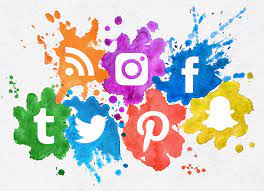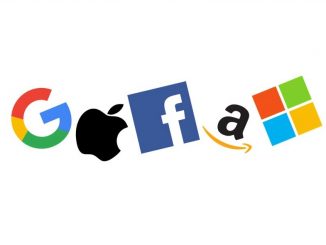
Introduction
YouTube is currently one of the largest video search and sharing platforms in the world, allowing users to upload, watch, share and comment on videos. This means that users can be more than just recipients of information, they can also create their own channels and become publishers of information. YouTube is undoubtedly a video platform with a huge social impact, but is it really a successful platform? This essay will mainly focus on a case study of YouTube business, when YouTube’s business commence, what are its primary fields of operation, how does it make money from its activities, and have any concerns been raised about the company.
YouTube’s business commence and development
YouTube, the fastest growing and most popular video platform in the world today, was founded in 2005.YouTube uses the concept of sharing videos instead of the traditional concept of posting videos. As Nicholas A. John (2017, p. xl) says, “the notion of ‘sharing’ is deployed quite naturally nowadays in the context of digital communication”, YouTube has become one of the most popular platforms for Internet users by virtue of its concept of allowing users to create and share content freely and easily. It was this concept that attracted Google to acquire YouTube for a high price in its second year of existence.
As browsing expanded, diversification of content offerings across multiple channels became necessary, so YouTube set out to broaden its content offerings, launching a partnership with a number of companies and organizations, including Warner Bacardi, a partnership that made YouTube popular and more of a threat to Apple’s paid music download market. YouTube then reached agreements with Metro-Goldwyn-Mayer Studios, Lionsgate Films and CBS to allow full-length movies and TV series to be shown on its U.S. site, a move to compete with HULU, which was already licensed to show National Broadcasting Company and Fox Broadcasting Company’s TV series. YouTube has also acquired NEXT NEW NETWORKS to focus on building a platform for YouTube’s partners to produce more professional content. This will allow YouTube to continue to attract viewers for the long term, rather than the slick videos or pirated music that abound on YouTube.
The concept of free sharing has created a massive amount of users, content, and traffic for YouTube. According to data, besides Facebook, YouTube is the most popular channel for businesses to share video content with 62% (Buffer, 2019), and 79% of users on the Internet have a YouTube account (Datareportal, 2019). These figures prove that YouTube is a successful video platform.
YouTube’s main fields of operation
Although Louisa Ha argues that, “YouTube was originally conceived with a profit motive, not a public service” (Ha, 2018, p. 4), in the past two years, YouTube has gradually found a more balanced operation model between user experience, copyright protection, advertisers’ needs and its own profitability.
- Advertising monetization: YouTube has taken a page from Google’s model to exploit the potential of advertising. Like Google’s keyword search ads, YouTube allows advertisers to buy keywords and display their ad videos on relevant YouTube video search pages. YouTube also provides tools that allow advertisers to target ads based on content characteristics, viewers’ age, gender, or interests, and has developed a special copyright identification system that identifies when users upload clips that are not approved by the copyright holder. YouTube has strengthened its partnerships with traditional media outlets to use their premium content on a buy or share basis, with hundreds of content partners such as Disney, Turner Broadcasting Group and others providing a large number of premium videos each year. YouTube is also actively encouraging users to upload and create high-quality, original videos through ad shares and other means.
- Paid membership: YouTube membership includes Premium and Music, paid members can enjoy ad removal, background playback, content download and watch movies, music, original content, etc. YouTube TV is only open in the U.S. to watch U.S. paid TV programs including ABC, NBC, Disney, ESPN and other daily channels.
- Paid service: The streaming music service is tentatively named YouTube Music PASS. All music producers on the YouTube platform have partnered with YouTube to join the latest streaming music service plan and abide by the terms.
In addition to these revenues, YouTube is also actively exploring other ways to make money, such as paying for live streaming of concerts and sporting events, and has even started selling souvenirs with YouTube graphics on them. With a multi-pronged strategy, YouTube has fought hard to convert its huge traffic and influence into real money. YouTube is also constantly checking planned channels to see if they continue to meet YouTube’s policies and guidelines. These policies and guidelines are very comprehensive considering all of YouTube’s growing worries about finding the right balance between creators, viewers and advertisers. Channels are not eligible for the YouTube Partner Program if all or most of the channel is dedicated to reused content and does not transform the original work by adding its own unique value. The spirit of this policy is to ensure that YouTube encourages the inclusion of unique and original content in the YouTube Partner Program and to protect and reward creators who are committed to original content.
YouTube is a big draw for users who have suffered from being trapped during the epidemic these past two years, and tremendous traffic has followed. For cross-border e-commerce sellers, this huge portion of traffic cannot be ignored, and if they can find the right YouTube bloggers to work with for their products, it will surely bring good sales and brand gain for their products.
Challenges and criticisms of YouTube

“Play” by Annie Roi is licensed with CC BY 2.0. To view a copy of this license, visit https://creativecommons.org/licenses/by/2.0/
YouTube has 2.291 billion active users as of July 2021 (Statista, 2021). Therefore, YouTube’s system processes tens of millions of video clips per day, providing a high level of video upload, distribution, display, and viewing services to users worldwide. However, many of its video clips contain content that violates copyright. YouTube does too little to prevent the uploading of copyrighted video content from being reviewed. Although YouTube displays a message when users upload videos, “Do not upload any TV shows, music videos, music concerts, or commercials without permission unless they consist entirely of content you created yourself” (YouTube, 2021), there is still a lot of unauthorized and copyrighted content out there.
One issue that can’t be bypassed, either from the YouTube user’s perspective or from the employee’s perspective, is content review. A former YouTube moderator is suing YouTube, accusing it of failing to protect workers who have to catch and remove violent videos posted to the site (Elias, 2020). There are very many similar cases, and the biggest problem with this is the lack of a good protection system for those content review moderators. These platforms therefore engage commercial content moderators to perform tasks that oscillate between the mind-numbingly re-petitive and mundane to exposure to images and material that can be violent, disturbing, and, at worst, psychologically damag-ing(Roberts, 2019, p. 39).
Conclusion
After its acquisition by Google, YouTube entered a new era of growth, subsequently signing partnerships with broadcasters and expanding its commercial space and profitability. YouTube is currently focused on advertising services, paid membership, and paid music services, and has inspired the creation of Internet users and created a number of online celebrities. YouTube is unique in many ways, with its large and diverse collection of videos and the variety of video producers. In addition, with access to nearly 50 languages (YouTube, 2021), YouTube has become a giant video platform in a sense. However, YouTube also faces content review challenges, which are inevitable as a digital platform, and YouTube still needs to strengthen the platform’s review of video content and video comments.
References
Elias, J. (2020, September 22). Former YouTube content moderator describes horrors of the job in new lawsuit. CNBC. Retrieved October 13, 2021, from https://www.cnbc.com/2020/09/22/former-youtube-content-moderator-describes-horrors-of-the-job-in-lawsuit.html.
Global Social Media Stats – DataReportal – global digital insights. DataReportal. (n.d.). Retrieved October 13, 2021, from https://datareportal.com/social-media-users?rq=youtube.
Google. (n.d.). What is copyright? – youtube help. Google. Retrieved October 13, 2021, from https://support.google.com/youtube/answer/2797466.
Ha, L. (Ed.). (2018). The audience and business of youtube and online videos. ProQuest Ebook
Central https://ebookcentral-proquest-com.ezproxy.library.sydney.edu.au
John, N. A. (2017). Sharing and the Internet. In The age of sharing (pp. xl-lvii). essay, Polity.
Published by Statista Research Department, & 10, S. (2021, September 10). Most used social media 2021. Statista. Retrieved October 13, 2021, from https://www.statista.com/statistics/272014/global-social-networks-ranked-by-number-of-users/.
State of Social 2019. Buffer. (n.d.). Retrieved October 13, 2021, from https://buffer.com/state-of-social-2019.
YouTube. (n.d.). How YouTube works – product features, responsibility, & impact. YouTube. Retrieved October 13, 2021, from https://www.youtube.com/intl/en-GB/howyoutubeworks/.
Roberts, S. (2019). Behind the Screen: Content Moderation in the Shadows of Social Media. New Haven: Yale University Press.
https://doi-org.ezproxy.library.sydney.edu.au/10.12987/9780300245318



